Sorting Your Recycling Matters
Niagara residents continue to demonstrate strong recycling habits with more than 80 per cent of households regularly using their Blue and Grey Boxes.
Participation is only the first step; properly sorting your Blue/Grey Box recyclables helps make recycling in Niagara more efficient; increases the revenue received from the sale of recyclables into the open market; and ensures that the materials collected at your curb are collected and recycled at Niagara Region's Recycling Centre.
Improper preparation and sorting of your recyclables can result in:
- Materials not being recycled
- Reduced lifespan of landfills
- Increased cost to the taxpayer
Properly preparing your recyclables keeps processing costs down, extends the life of our landfills, and increases recycling revenues to help offset program costs to you, the taxpayer.
Effective recycling is dependent on volume and properly sorted (acceptable) material.
The more material that can be received and the less corrective sorting action that takes place, the more revenue will be generated from having a clean stream of material. The more profitable the venture, the better it is for Niagara taxpayers.
Learn more about proper sorting and preparation for select materials known to cause problems at the Region's Recycling Centre by watching the Recycling Matters video series and by viewing the step by step images below.
Here are some tips for common errors
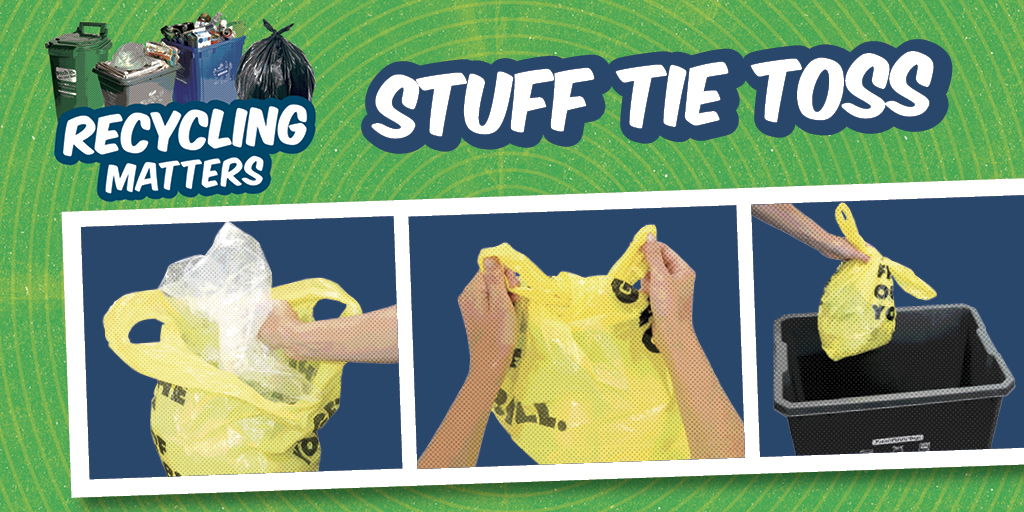
Stuff, Tie, Toss
Stuff all loose plastic bags and stretchy plastic outer-wrap (such as grocery bags, produce bags and bread bags) inside one plastic bag, tie closed and toss in the Grey Box.
Large volumes of loose stretchy plastic in the Grey Box (and incorrectly placed in the Blue Box) requires additional manual sorting and can damage sorting equipment at the Recycling Centre.
It is much easier to sort bundled plastic bags and stretchy plastic outer-wrap from the paper (Grey Box) stream than from the container (Blue Box) stream. In the paper stream, there is less chance of bags becoming contaminated between metal and glass material and becoming contaminated with food waste. If bags are contaminated, they can't be recycled.
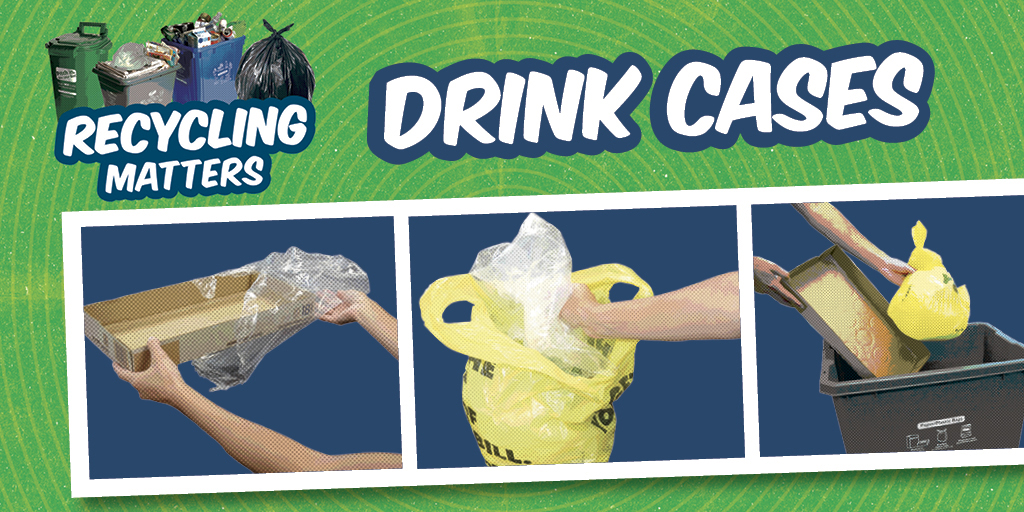
Drink Cases
Drink cases must have the plastic sleeve separated from the cardboard tray and bundled with other plastic bags.
Place the cardboard tray and plastic bags separately in the Grey Box.
At the Recycling Centre, material collected at the curb is separated by material type and baled to be sold to end markets.
By separating these items you are making the recycling process more effective and efficient as the plastic sleeve and the cardboard tray cannot be separated by the equipment at the Recycling Centre.
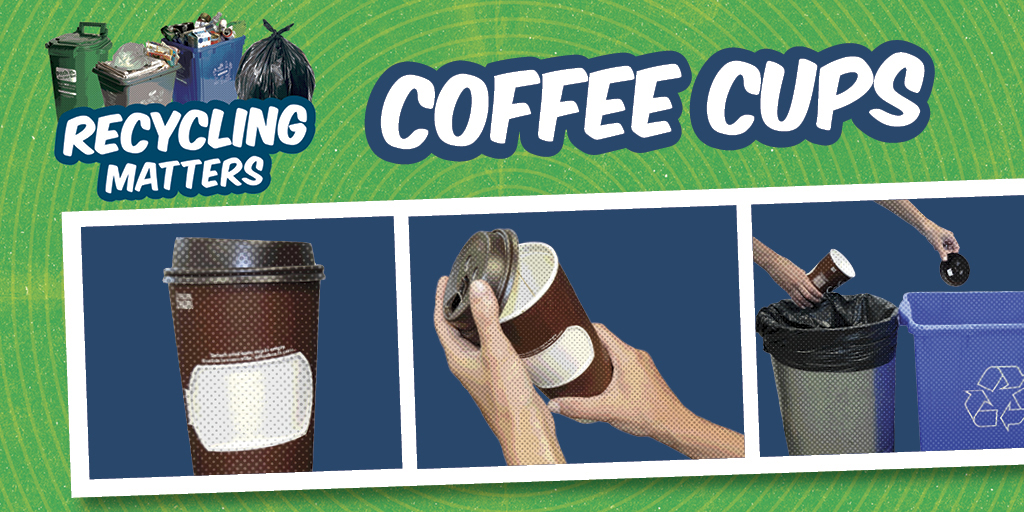
Coffee Cups
Coffee cups are not recyclable in Niagara but the plastic lids are accepted for recycling.
Remove the plastic lids from your coffee cup and place the lid in the Blue Box and the coffee cup in the garbage.
Use a reusable mug next time you buy your hot beverage.

Newspaper in Plastic Sleeves
Bundle the plastic sleeve with other plastic bags into one bag and place the newspaper and the bundled plastic bags separately in the Grey Box.
Newspapers that are not removed from the plastic sleeve require additional manual sorting at the Recycling Centre in order to ensure the newspaper gets properly recycled.
By separating these items you are making the recycling process more effective and efficient as the plastic sleeve and the newspaper cannot be separated by the equipment at the Recycling Centre.
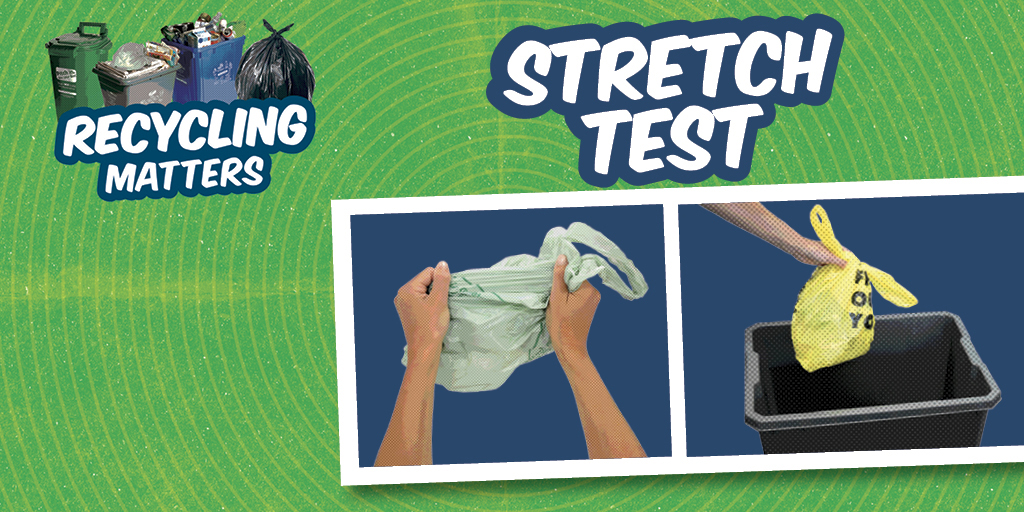
The Stretch Test
The stretch test can help you determine if a plastic bag can be placed in the Grey Box.
If the plastic bag stretches, like a produce bag or a bread bag, the plastic bag can be stuffed into one bag with other bags, tied closed and tossed into the Grey Box.
Unacceptable plastic bags include pasta packaging, chip bags and cereal box liners since they are not made from stretchy plastic.
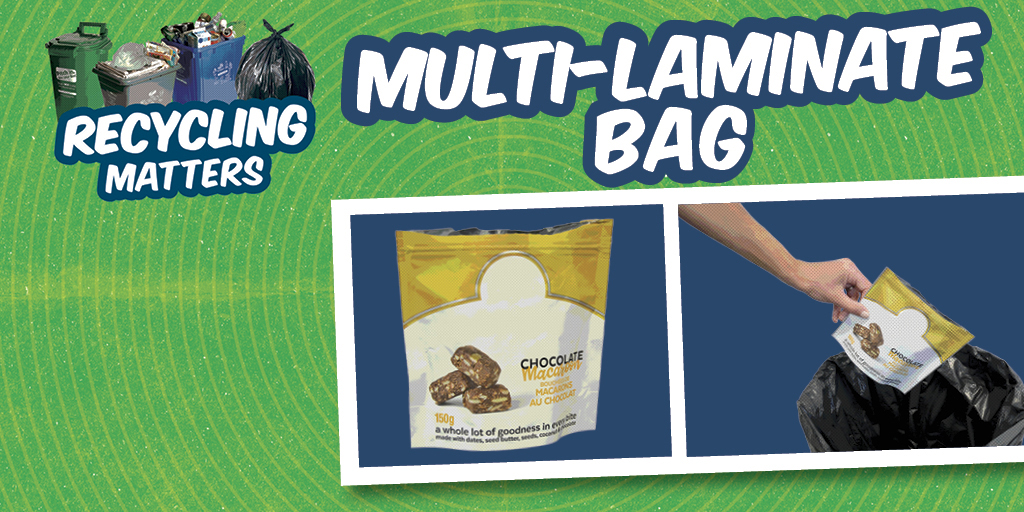
Multi-layered laminate bags
Multi-layered laminate bags (such as pet food bags and frozen food packaging) are to be placed in the garbage.
These bags are laminated on the outside and waxed on the inside, so they cannot be recycled.
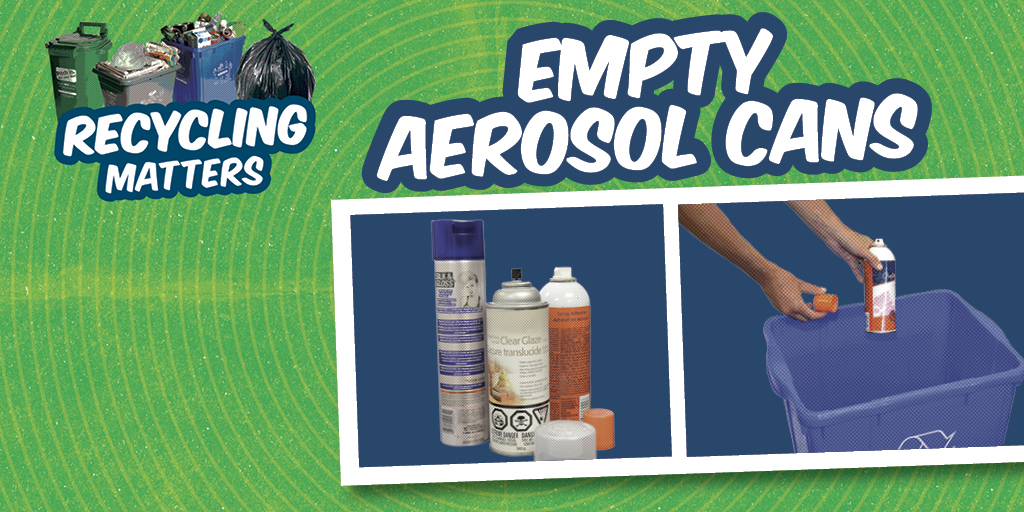
Aerosol Cans
Aerosol cans must be completely empty before placing them in the Blue Box.
If partially full aerosol cans are placed in the Blue Box and go through the bailing machine at the Recycling Centre, they could explode and cause extreme danger and potential harm to employees.
Full or partially full aerosol cans must be taken to a Household Hazardous Waste Depot for proper disposal free of charge (commercial material not accepted).
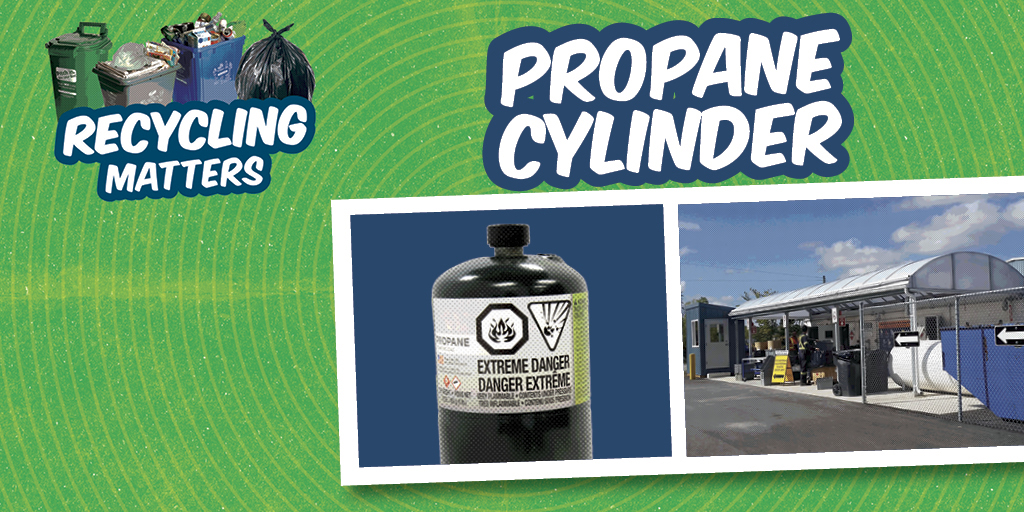
Propane Cylinder
Propane Cylinders (such as camping propane tanks) are not accepted in the Blue Box.
Bring propane cylinders and propane tanks to a Household Hazardous Waste Depot for proper disposal, free of charge (commercial material not accepted).
Recycling Centre staff must remove propane cylinders that were incorrectly placed in the Blue Box as they come into the plant on conveyor belts which poses a threat to worker safety.
If a missed propane cylinder were to go through the bailing machine, it could explode.
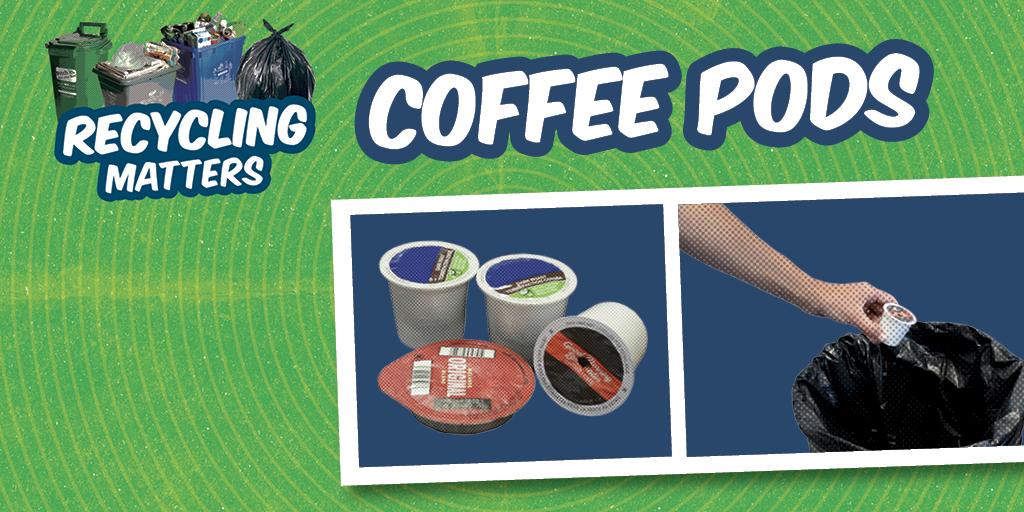
Coffee Pods
Despite product labelling, coffee pods are not compostable or recyclable in Niagara. Place all coffee pods in the garbage.
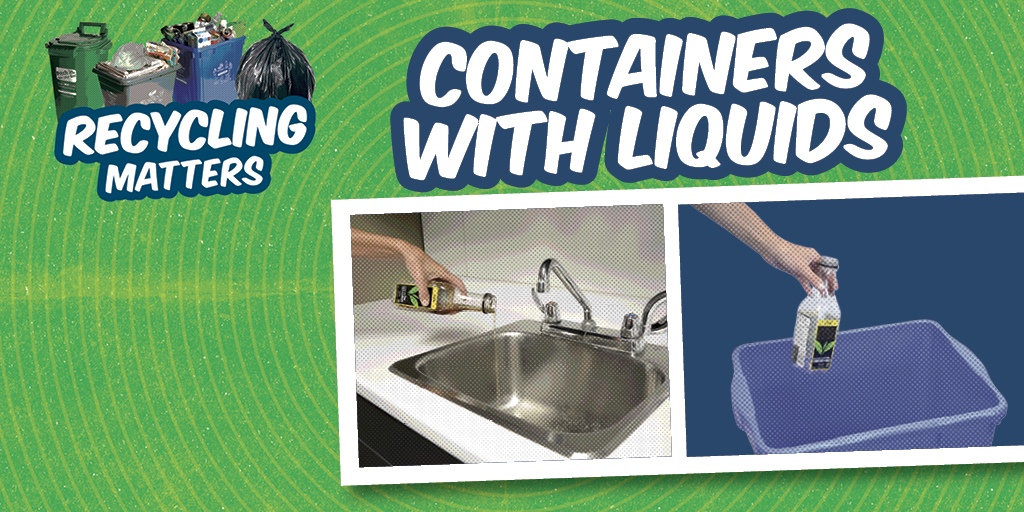
Containers with Liquids
When containers with liquids are placed in the Blue Box, the optical sorters at the Recycling Centre are unable to properly sort the containers because they are too heavy.
In turn, this causes the containers to pass through the system undetected by the scanners and as a result, do not get sorted correctly.





